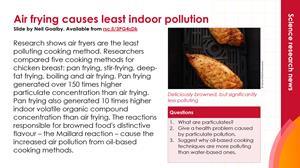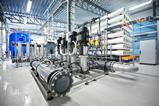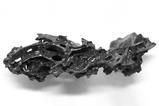Study highlights the impact of cooking methods on indoor air quality, with air fryers emerging as a cleanest option
-

Download this
Use this story and the accompanying summary slide for a familiar context when studying pollution with your 14–16 learners.
Download the story as MS Word or PDF and the summary slide as MS PowerPoint or PDF.
Air fryers produce significantly less air pollution than other cooking methods, scientists confirm.
Researchers measured air pollution while cooking chicken breasts in a University of Birmingham research kitchen. They compared the pollutants produced while cooking the meat in an air fryer compared to four cooking methods on an induction hob: pan frying, deep-fat frying, stir-frying and boiling. Atmospheric chemist Christian Pfrang led the team that measured volatile organic compounds (VOCs) and particulate matter in the kitchen during cooking.
Over the past decade, awareness of the potential health risks associated with indoor air pollution has grown, along with the knowledge that cooking significantly contributes to indoor pollutant levels.
Pollutant particulars
Pan frying and deep-fat frying proved the most polluting cooking methods, producing over 200 parts per billion (ppb) of VOCs. The scientists measured 110 ppb while stir-frying, 30 ppb while boiling and just 20 ppb when using the air fryer. Air frying produced less than one-tenth the VOCs of pan frying and deep-fat frying. In terms of peak concentrations of particulate matter, the differences were even larger, with the air fryer producing less than 100 times as much particulate matter compared to pan frying.
Researchers attribute the pollution from the oil-based cooking to the Maillard reaction between amino acids and reducing sugars that give browned food its distinctive flavour.
Although the experiments involved just 10 minutes of cooking, pollutant levels remained substantially elevated in the research kitchen for over an hour afterwards. Oil quantity and hob temperature also influenced pollution levels, the team found.
‘Improving the ventilation in kitchens, by opening windows or using extractor fans, will help to disperse polluting particles and reduce personal exposure,’ says Christian.
This article is adapted from Rebecca Trager’s in Chemistry World.
Nina Notman
Reference
R Tang et al, Indoor Air, 2024, doi.org/10.1155/2024/6355613
Download this
Summary slide with questions and the article for context when teaching 14–16 lessons on pollution: rsc.li/40DcdAj
Downloads
Pollution from cooking student sheet
Handout | PDF, Size 0.21 mbPollution from cooking student sheet
Handout | Word, Size 0.95 mbPollution from cooking summary slide
Presentation | PDF, Size 0.24 mbPollution from cooking summary slide
Presentation | PowerPoint, Size 2.87 mb














No comments yet